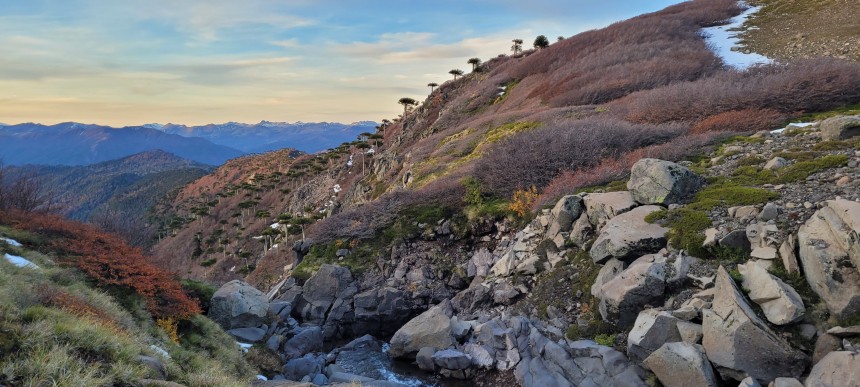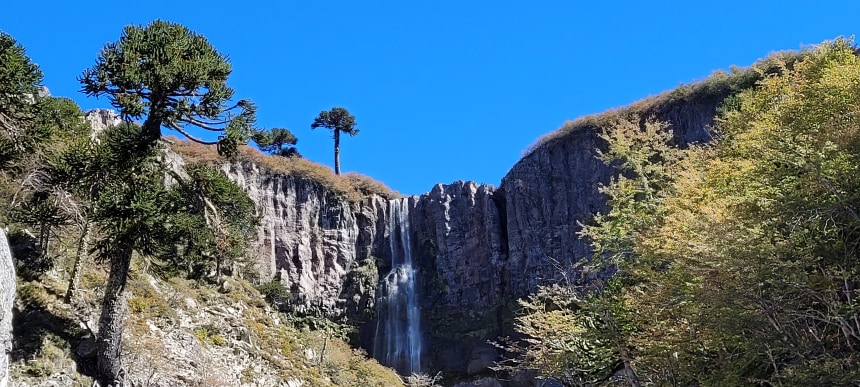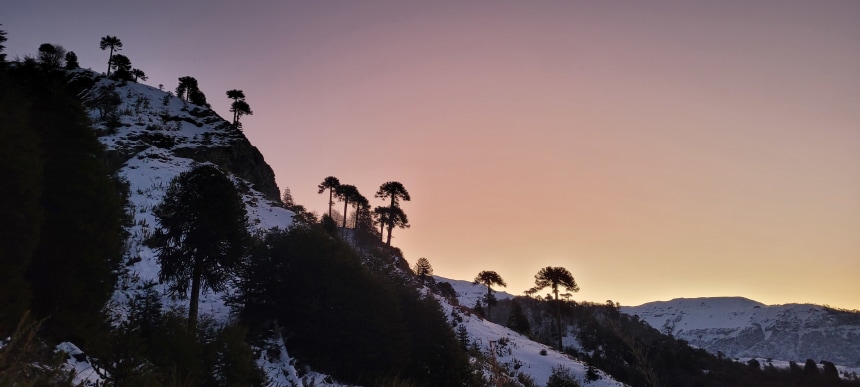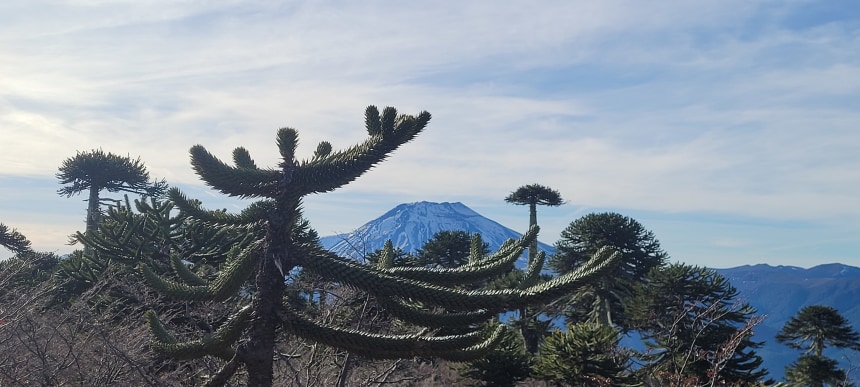
Chile has been long known for some of our bigger attractions, including Torres del Paine and Easter Island. But much less far afield, practically in Santiago’s own backyard, is one of the most geologically active and stunning valleys Chile offers: Malalcahuello (mal-AL-ka-WAY-o).
Some seven-hour drive from Santiago or an hour and a half from the Temuco airport area is a large volcanic valley known for glaciers. Its vast monkey puzzle tree (Araucaria) forests, the fruit of which, the piñon, have sustained the local Pehuenche people for millennia. The name of this indigenous people literally means “people of the Araucaria tree.” No visit to this area would be complete without a meal taken in a local dwelling called a Ruka or a forest walk with knowledgeable Pehuenche guides.
The Malalcahuello valley is rich in nature, with streams, forests, glaciers, lakes and volcanoes, and is home to two national parks, Conguillío and Tolhauca, in addition to two contiguous national reserves, Malalcahuello and Nalcas, the latter named for a giant-leaved plant with a fleshy, edible stalk. Much of the Malalcahuello Valley is at or above 900 meters above sea level, which is the preferred environment for the araucaria trees, and it also occupies an important environmental niche. Visitors commonly spy on foxes, the small, guinea pig-like tunduco. With a lot of luck, they may even see a diminutive monito del monte, Chile’s tiny member of the marsupial family. Overhead out in the open, keep an eye out for Andean condors, or under the forest canopy, keep an ear for the pecking and swooping of the red-headed giant woodpecker.
Before the ski resort of Corralco was opened in this area in 2013 on the flanks of the Lonquimay volcano, Malalcahuello was a fairly sleepy destination, with people from the area coming to its local hot springs and volcano hunters and nature lovers occasionally passing through. Here, they would spend time in the national parks and reserves, getting to know this volcano alley, with volcanoes such as Llaima, Tolhuaca, Lonquimay and Nevados de Sollipulli.
But Malalcahuello is coming into its own, helped along in part by UNESCO declaring parts of the area a geopark in April of 2019. They have named the geopark Kütralkura, which means “firestone” in the local language. It consists of an area of 810,000 hectares and has almost 40 points of geological interest, tracing back to recent and not-so-recent volcanic activity.
For visitors to the area, there are many different activities. These may include hiking or mountaineering in and near the national parks and reserves, through the verdant forests of monkey puzzle and lenga (a type of beech), to hidden mirror lakes backed by glaciers while keeping an eye out for geological formations. Or, if cycling is more your style, there are forest roads that visitors can ride on conventional or assistive e-bikes. There is also an old railway in the area, which has been converted to a cycle path. Unlike many other bike paths in Chile, it does not run parallel to any roads but instead cuts through the forests, headed through tunnels in complete quiet as you follow the family-friendly bike routes of Malalcahuello. There is also horseback riding here, which is no surprise, as the name Malalcahuello means “horse corral” in Mapundungún.
This magical area is most visited in winter by snow-seekers, who take advantage of some of Chile’s most reliable snow, with a long season due to how far south it is. Corralco is still, however, relatively unvisited, and long lines at the lifts are unknown. As winter gives way to spring, some of Chile’s most various fungi come to life in the forests in the form of many colourful mushrooms, including the red and white polka-dotted Amanita muscaria.
After skiing or hiking, or even after driving in at any time of year, a visit to one of many hot springs makes a nice way to cap off the day, and there are several to choose from, from the more rustic to more spa-oriented, with something to suit every taste.
The remote, almost primordial sensation of spending time in Malalcahuello, with its unusual vegetation and geology, feels like a world away, but lucky for visitors to Chile, it’s a short drive back to Temuco, over to Pucón or back to the main highway that connects much of Chile.





